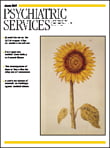What the CATIE Study Means for Clinical Practice
This issue features a special section presenting data from participants at baseline who enrolled in the Clinical Antipsychotic Trials of Intervention Effectiveness (CATIE). In September 2005, when results of the initial outcomes from the CATIE intervention were published, key constituencies staked out various positions for fear that the CATIE results would be used to impose restrictive formulary policies. Their concerns were based principally on the failure to find substantial differences in effectiveness between a generic first-generation antipsychotic drug and several second-generation agents (with the exception of clozapine) that cost much more.
On behalf of the CATIE investigators, I would like to take issue with the notion that the results warrant formulary restrictions and instead argue that the results militate for the widest array of treatment options. Anyone who doubts this has only to observe the high rate of treatment discontinuation. The fact that almost three-quarters of patients or their clinicians wanted to switch medications speaks volumes about the limitations in efficacy and the side effects of these drugs. Although medications work and are vastly preferable to no treatment, it is abundantly clear that patients and clinicians were looking for something better. The results confirm what experienced clinicians know: that patients vary greatly in their responses and that antipsychotic drugs also vary in their efficacy and safety profiles.
Putting these two sources of variation together, one can understand how the art of psychiatric medicine requires judicious use of evidence to find the right treatment for each patient, a process that often requires sequential trials of medications. The fact that a substantial proportion of patients (48 percent) remained in the trial and on medication continuously for 18 months may be at least partly due to the ability to change medications when necessary.
Given the high rates of discontinuation and the fact that many patients left the trial before trying other options, the results also support the need for adjunctive evidence-based psychosocial practices to augment pharmacotherapy and optimize treatment for individual patients.
At the same time the results of the CATIE study do not appear to justify the current 95 percent market share for second-generation agents. They simply aren't that much better. We must await further results and the cost analyses from the CATIE trial. However, it already seems clear that the way to achieve more rational use of first- and second-generation drugs is not by restrictions on the use and choice of medications.



